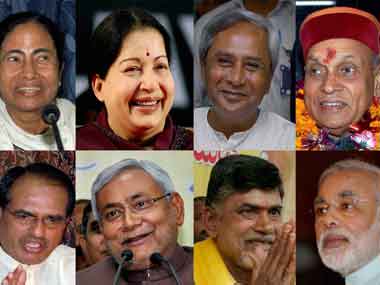Eight states vs the Centre. If there’s a new political formulation unfolding, its contours are not visible yet. The leading players are too dissimilar in ideology and too individualistic temperament to fit into a coherent long-term game plan. It is difficult to conclude from the development that a non-UPA, non-NDA formation is afoot either. However, there’s clear indication that states have turned assertive and are prepared to gang up to fight for their rights. The recent issue—powers of the National Counter Terrorism Centre vis-a-vis that of the states—may not seem to be the right cause to fight for, but its implications go much deeper than what is apparent. It promises to have far-reaching effects on the Centre-state relations. The current trend may lead to the collapse of centrism. The states are demanding to be heard and for a change, putting some muscle into the demand. This is a welcome development given the skewed arrangement of power between the Centre and the states. For decades, the latter have been demanding a more equitable—and more respectful—equation with the former. Now, things look headed in the right direction.[caption id=“attachment_219316” align=“alignleft” width=“380” caption=“A combo picture of chief ministers of non-Congress and BJP ruled states and a Congress ally and former Andhra Pradesh CM Chandrababu Naidu. They raised a banner of revolt against the Centre’s proposal to set up NCTC. PTI”]  [/caption] Federal in form and unitary in spirit – that is how the Indian Constitution is described. Ideally, the relationship between the Centre and the states should be one of equals. In practice, the ‘co-operative federalism’ is heavily tilted towards the Centre. The unitary bias was necessitated by the turbulent circumstances amid which the Constitution was framed. Those were very early days for the democracy with a lot of instability around. There were attacks on the country and the divisive tendencies within the country were too strong. The situation called for a strong Central government. The arrangement looked perfect till Jawaharlal Nehru was at the helm and the Congress was in power in most of the states. Since 1967, when the party got into an internal power struggle, it has been turned into an instrument to harass states not ruled by the Congress. Governors have been misused for political ends and efforts have been made to make unfriendly states unstable. There has been in discrimination in allotment of Central funds too. However, the root of the problem was not the Congress only, there were problems with the original constitutional provisions which helped perpetuate the Centre’s hegemony. The sufferers were not the non-Congress governments always, it affected the states the party ruled too. For example, the centrally-sponsored schemes such as JNNURM and MNREGA. Formulated without consultation with the states, these saddled the states with expenditures they could ill-afford. There were several clauses in the programmes which infringed on the autonomy of the states. The states have been demanding a correction for long. The Sarkaria Commission of 1983, appointed to review Centre-state relations, made some drastic suggestions, recommending more powers to the states. Its recommendations have been implemented in bits and pieces but with no real change in the Centre’s powers. The mechanism set for better coordination—the Inter-state Council—has not quite delivered. Given the present climate of adversarial politics, it is not expected to. In any case, the central government will be reluctant to part with its powers as it would make it redundant. Now that several states have raised the issue of federal powers unitedly, first on the Lokayukta and now over NCPC, and the Congress-led government in the Centre is too weak to take them on, there could be end to centrism in sight. It does not promise to be a good trend, given the quality of leadership at the states and the narrow focus on local politics. But the experiment, if it comes out successful, is worth it. At least it would put the states on a more equal footing with the Centre. Any problems arising thereof could be taken care of later.
The current trend may lead to the collapse of centrism.
Advertisement
End of Article


)
)
)
)
)
)
)
)
)



